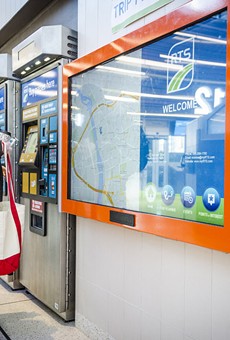Well, this is terrific: City Hall and the Rochester school district are feuding again.
On the heels of a stabbing inside the new downtown bus station in December and a fight outside the center last week, Mayor Lovely Warren lashed out, saying the district and Superintendent Bolgen Vargas aren't doing enough to stop the violence.
It's assumed that city school district students were involved in both incidents - and in all the other melees that have plagued downtown Rochester for the past few years.
One of the reasons we have a new $50 million bus station a block north of Main Street is that the transit authority wanted to give riders a warm, out-of-the-elements place to wait for the bus, and city officials and business leaders wanted to get rid of the wall of buses lining up along Main.
But while they'd never say it in so many words, community leaders saw another advantage in building a bus station where it is: It got large groups of teenagers off of Main Street, where they used to hang out when they changed buses after school. Now the buses, the teenagers, and the fights have moved north.
Officials from City Hall, the transit authority, and the school district have been meeting to come up with a solution. But late last week, the discussions apparently fell apart, and the mayor released a statement charging that "Vargas and his team have refused to implement or participate meaningfully in any discussions that could lead to safe passage for all."
Predictably, one issue in this conflict is money: If extra security is needed when students arrive downtown after school, who should pay for it?
In a strong pushback after Warren released her statement, Vargas said the school district already spends about $60 million a year busing students to and from school. If it has to pay for security at the bus station, he said, that means less money for students' education.
The school district, he said, can't bear the burden for ending the fights. "We will not be able to solve all the ills of the community," he said.
He's absolutely right, of course. The school district carries students to school. It feeds many of them. Its staff goes out and tries to find students who persistently fail to show up for class. Many of its teachers pay out of their own pockets for school supplies for students who can't afford to buy them.
What more do we want? For the district to walk the students into their homes, feed them supper, and tuck them in bed?
I'm not minimizing the danger of these fights, or the intimidating effect of a group of teenagers running up and down the street, downtown or elsewhere. That has to stop.
And obviously, the school district has to be involved in finding a solution. But this is a community problem. The district's job is to educate. It could double its transportation budget and drive every single student straight to his or her own home, and that wouldn't stop the fights. Because it wouldn't address their causes.
The causes lie in family stability, parenting, students' emotional health and anger-management skills: all of that and more. To address those problems, social service agencies, church leaders, health-care workers, neighborhood leaders, and political leaders need to be involved. Yes, and police officers, too.
This is not an insoluble problem. We're talking about a relatively few young people, not thousands. But community leaders need to focus on the roots of the problem rather than trying to bus it out of sight.
Our film reviews
We're sorry to announce this week that George Grella will no longer be writing for us. George has shared his analysis and depth of knowledge about films with our readers for more than three decades, and we're immensely grateful for his valuable contributions.

